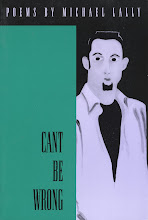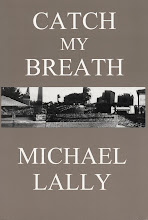For my taste, this movie is more worthwhile an effort, and achievement, than Scorcese’s THE DEPARTED.
Back when they started directing, I was much more into Scorcese, and still had lingering political objections to Eastwood. But now I feel like Eastwood is our Kurasawa.
Unlike Scorcese lately, Eastwood doesn’t seem to be trying to prove anything—and doesn’t have to. Scorcese seems to be out to prove to Hollywood that he can make a commercially successful movie, in Hollywood’s terms, instead of the less commercial but unique films of his earlier career.
I understand that. He could get probably any move made back in the late 1970s, but these days, he has to have a commercially acceptable star and commercially acceptable story to even get financial backing.
Eastwood already proved he can make the big bucks and satisfy the business end of Hollywood’s demands, without sacrificing too much in the way of his usual concise artistry. Though FLAGS OF OUR FATHERS attempts a little more than his usual fare.
Maybe because I was a baby and toddler during WWII, and my two oldest brothers— teenagers at the time—were in the service toward the end of it, one of them stationed on Okinawa while there was still fighting there, that makes me more susceptible to the story told in FLAGS OF OUR FATHERS.
Or maybe I was set up for my own teary-eyed response by my oldest brother, a Franciscan friar ever since his return from his stateside service in that war. He told me he wept when he saw it. Not only for lost youth, all the young men who died in that conflict, but especially for Ira Hayes, one of the flag raisers on Iwo Jima who, despite his sacrifices in the war, was still treated like a mascot or pet or just plain “dirty injun.”
If you see it, make sure you stay for the credits, not only to see how well Eastwood cast the film—most of the actors look so much like the historical figures they play it’s sometimes difficult to tell you’re looking at a photo of the real guy—but real shots of the original spots and battles and actions depicted in the film.
No film made in the present can ever completely accurately capture an historic period, no matter how well researched or how much attention is paid to the details. As in most historical films, you can spot the era when it was made almost as quickly, or quicker, than the period the story is set in. But of all the movies made about WWII in recent decades, this, for today, is my favorite.
There’s lapses. The banter is sometimes a little forced, a little too expository, a little too contemporary, and the leads aren’t all perfectly cast, beyond appearances, or perfectly acted. But the intent of the film and its achievement still seems to me to be beyond what others have attempted.
I can’t wait to see the companion film Eastwood made to this one, from the Japanese soldiers’ perspective—LETTERS FROM IOWA JIMA. Already chosen as best film of 2006 by several critics and critics’ associations, it has overshadowed FLAGS OF OUR FATHERS with most critics. The latter hasn’t been a great financial success so far either.
But for my money, it’s one of the two or three most worthwhile serious films of the year to see.
I’d love to see Scorcese make a movie about that war, or any war for that matter. The old Scorcese would have made something only he could on that subject, something revelatory and thought provoking and artistically unique. Like Eastwood has.
Subscribe to:
Post Comments (Atom)
















No comments:
Post a Comment